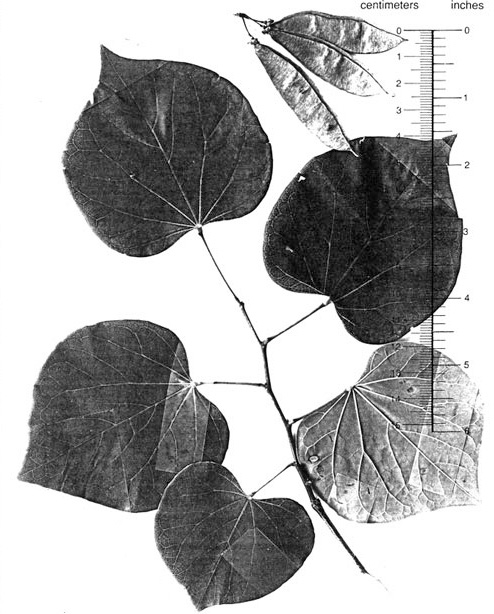Cercis canadensis
 eastern redbud
eastern redbud

More often planted than our native California western redbud and more showy. It volunteers freely on campus, for example on Stanford Avenue. The seed pods are narrower than those of California redbud and fall off earlier. The heart-shaped 5-inch leaf blade is broader than it is long, darker green above than below, and has a sharp tip. Western redbud has a similar leaf but rounded at the tip or slightly notched. Strikingly, flowers are produced along the branches and trunk before leaves appear. The related C. siliquastrum is called the Judas tree since Judas Iscariot reportedly hanged himself from one (see Name derivation below).
Substantial specimens are in the northeast corner of Lantana. A handsome row of younger trees lines on Capistrano Way. In Palo Alto, a specimen at 1031 Hamilton Avenue is actually around the corner on Chaucer Street.
Cultivar ‘Forest Pansy’ has distinctive reddish purple leaves, but puts on more of a muted show when in flower. Several are in the Knight Management Center (which opened spring 2011), in the walkway between the MBA Class of 1998 building and the Patterson building. They were part of the original landscaping of the Serra Street Complex at that location.
See rosy-magenta-flowered C. canadensis var. texensis ‘Oklahoma’ strewn around the Torrey pines on the east edge of Schwab Residential Center, opposite Manzanita Field; two are in the courtyard of Central Energy Facility. Almost three dozen white-flowered C. canadensis var. texensis ‘Texas White’ are scattered along the east side of Roth Way Garage and the north face of Anderson Collection. A pair of C. canadensis ‘Alba’, another white-flowered redbud, is between the Bookstore and Post Office, among the Modesto ashes.
Name derivation: Cercis – Greek name kerkis, probably for a poplar, but also applied to C. siliquastrum, which through confusion between Judas and Judaea, is now traditionally the tree on which Judas hanged himself; canadensis – of Canada. – William T. Stearn, Stearn’s Dictionary of Plant Names for Gardeners, Portland, OR.: Timber Press, 1996.
About this Entry: The main text of this entry is from the book Trees of Stanford and Environs, by Ronald Bracewell, published 2005. Note on Forest Pansy added by John Rawlings. Additional locations, minor edits (Mar 2017, SP). ‘Texas White’ locations added (Apr 2020, SP). Name derivation of genus from Stearn corrected (Mar 2023, SP). ‘Oklahoma’, ‘Alba’, other locations added (Mar 2025, SP).



